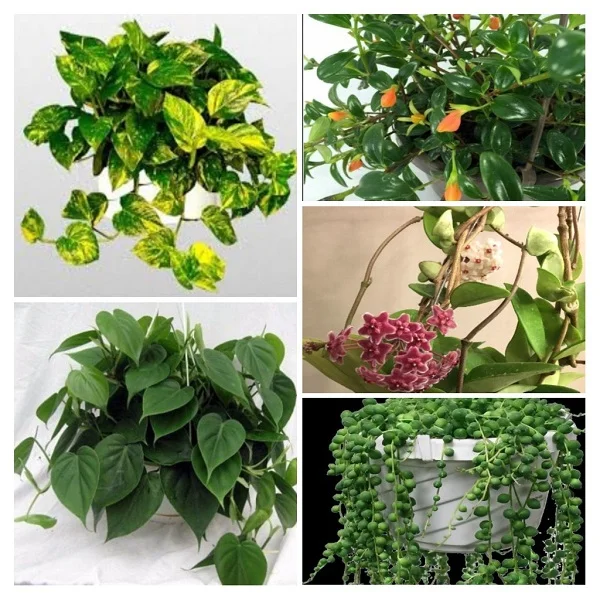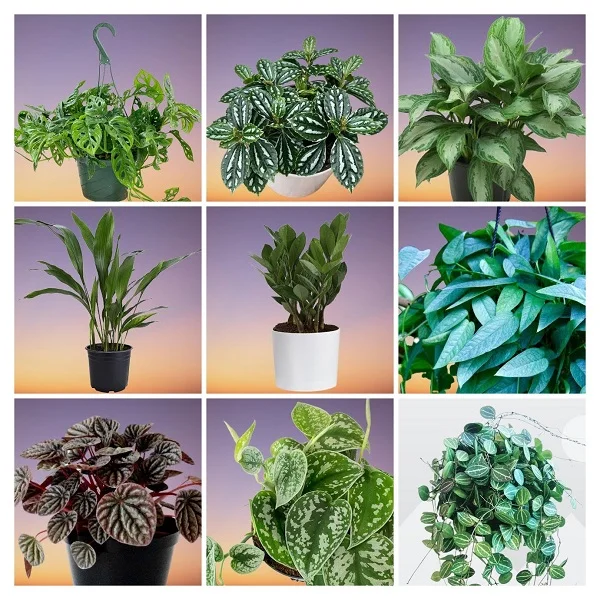Tradescantia Nanouk Indoor Care, Propagation, Commong Problems and Solutions
Some links in this post may be affiliate links
Tradescantia Nanouk thrives in bright indirect light, average warmth, moderate humidity and consistently moist, rich, well-drained soil with monthly feeding in the growing season.
Tradescantia Nanouk is a beautiful indoor plant which easily adapts to indoor growing conditions. In this guide, we will cover everything you need to know to keep the plant happy. Let's first look at some facts about this plant.
Tradescantia albiflora 'Nanouk' also called Fantasy Venice Plant or Spiderwort Nanouk is one of the popular Tradescantia varieties that has been trending recently on account of its bright green, pink & purple, fuzzy leaves growing on sturdy stems.
On account of its vibrant and colourful foliage, Tradescantia Nanouk is one of the best plants for the living room where it will create a delightful sight.
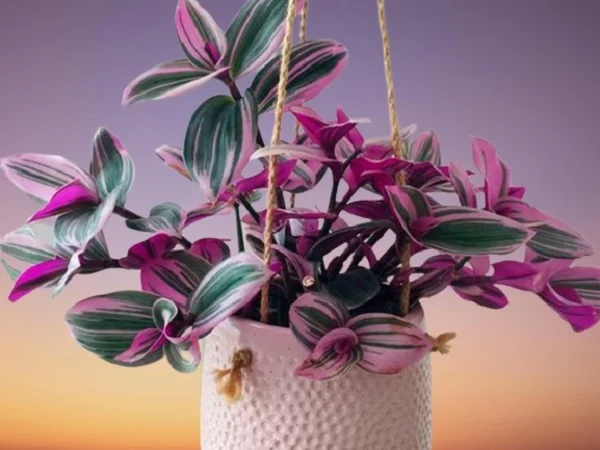
Botanical name: Tradescantia albiflora 'Nanouk'
Family: Commelinaceae
Common names: Tradescantia Nanouk, Fantasy Venice Plant, Spiderwort Nanouk
Origin
Unlike other Tradescantia plants which originated in Central America, Mexico, and South America, Tradescantia albiflora 'Nanouk' originated in Sappemeer, Netherlands in 2012.
Fantasy Venice Plant is a cross between two selected seedlings of Tradescantia albiflora. It is a patented plant which was developed to create a new hardy and vigorous Tradescantia plant.
Size
Tradescantia Nanouk is a fast-growing plant which can grow to a height of about 3–6 inches and trail to about 12–24 inches long in a few months.
Flowers
Tradescantia Nanouk will produce small white and yellow flowers arising from the pink buds under the right growing conditions.
Is Tradescantia Nanouk toxic?
Yes. Tradescantia Nanouk is mildly toxic to humans and pets. If ingested, the plant sap can cause burning in the mouth, tongue and throat. The sap may also cause skin irritation in sensitive skin; always wear gloves when handling the plant.
Where to Buy
Are you looking to add these plants to your collection? You may acquire Tradescantia Nanouk online from Amazon (Link to Amazon).
How do you care for Tradescantia Nanouk indoors?
To care for Tradescantia Nanouk indoors, give it bright indirect light, average warmth of 16-270C, moderate humidity of 50-55% and consistently moist, fertile, well-drained soil coupled with monthly feeding during the growing season.
Spiderwort Nanouk care requires pruning to keep it neat, to reduce pest and disease infestations, to control growth and to rejuvenate growth. Repotting is necessary when it becomes extremely pot-bound as it grows best when the roots are confined. Keep reading for more on these growing conditions and how to provide them.
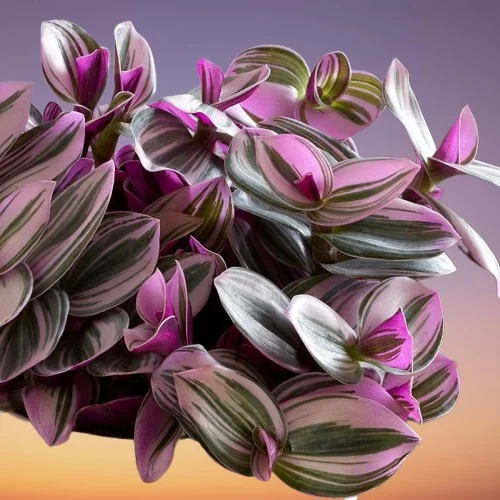
Light Requirements
Tradescantia Nanouk prefers bright indirect light (filtered light). Keep it away from direct sunshine or protect it from direct sun rays to prevent scorching of the leaves.
Low light will cause leggy growth, leaf drop and loss of leaf color. Therefore, if the natural light is not adequate, use a full spectrum grow light to supplement it.
Turn the pot regularly to ensure that the plant receives light on all sides for a balanced growth and prevent lopsided growth.
Watering
Water Tradescantia Nanouk thoroughly in spring and summer while allowing the top 1-2 inches of soil to dry out between waterings. Maintain the soil consistently moist but not soggy to avoid rotting, yellowing and leaf loss.
Decrease watering in fall and winter to keep the soil slightly moist as growth is minimal at this time. Do not allow the soil to dry out completely to prevent wilting, yellowing and leaf fall.
Use chlorine-free water like rain water or filtered water to avoid getting brown, shrivelled leaf tips and edges. The water should be at room temperature to prevent shock which can lead to stunted growth and leaf drop.
Ascertain that the pot has a drainage hole and the soil is well-draining to prevent waterlogging which can result in root-rot and death of the plant.
Temperature & Humidity
Tradescantia Nanouk flourishes in average warmth of 16-270C with a minimum 130C . A room temperature that is ideal for you as adequate for the plant.
Keep the plant from sources of drafts like AC units, heat sources, windy doors to prevent sudden changes in temperature which can result in reduced growth, yellowing and leaf fall.
Spiderwort Nanouk does well in a humidity of 50-55%; too low humidity may result in brown, shrivelled leaf tips and edges. Therefore, to raise humidity, set the pot on a wet pebble tray, use a humidifier or group the plants together. Make sure that there is proper circulation to minimize fungal diseases.
Fertilizer
Feed Tradescantia Nanouk with a balanced, liquid fertilizer every 4 weeks in spring and summer to encourage a lush growth.
Stop feeding in fall and winter as the growth is minimal and feeding at this time may lead to fertilizer burn; browning of leaf edges and tips.
Once in a while, leach out accumulated salts by running a stream of water through the soil until it drains through the drainage hole.
Potting Soil
What kind of soil does a Tradescantia Nanouk like?
Tradescantia Nanouk likes a loose, well-draining soil that is rich in organic matter which does not get soggy while providing the required nutrients.
Repotting
Repot Tradescantia Nanouk in the beginning of the growing season (spring to early summer), only when the plant has become extremely pot-bound as it grows best when slightly root-bound.
Select a pot one size larger than the current one and ensure that the pot has a drainage hole to prevent the soil from getting soggy as it can lead to rotting. Take a look at these ceramic pots with drainage holes and saucer on Amazon.
Pruning & Grooming
Pruning Tradescantia Nanouk involves:
- Regular removal of dead foliage to maintain the plant neat and discourage pest and disease infestations.
- Pinching off the growing tips to control the growth and encourage a bushy, compact growth. Snip the tips at a point just above a leaf node.
- Cutting back leggy stems at the beginning of the growing season to rejuvenate growth.
Clean the leaves by damp-wiping with a soft cloth to keep them clean and neat as well as discourage pest and disease infestations.
Tradescantia Nanouk Propagation
Tradescantia Nanouk is propagated by plant divison or from stem cuttings in the beginning of the growing period (spring to early summer) when in active growth.
Propagating Tradescantia Nanouk by plant division
- Water the plant thoroughly at least 1 day before to make it easier to divide and also hasten establishment.
- Slip the plant out of its pot and carefully divide it into sections. Ensure each sections has adequate roots and at least one set of leaves.
- Select a 6 or 8 inches pot and ensure that the pot has a drainage hole to prevent the soil from getting soggy as it can lead to rotting.
- Fill the pot with loose, free-draining soil moisten it and make a hole in the center of the pot. Make sure that the hole is slightly wider than the root base of the section.
- Position the section in the previously made hole and lightly firm the soil around the base while taking care not to bury it too deep; maintain it at the same soil level it was in the previous pot.
- Place the set up in a warm, well-lit place away from direct sunlight to avoid scorching.
- Water the soil thoroughly until the new plant is well established after which you can begin routine care.
Propagating Tradescantia Nanouk from stem cuttings
- The stem cuttings root easily so there is no need for rooting hormone.
- Take a stem cutting about 4-6 inches long from a healthy plant and ensure it bears at least two sets of leaves.
- Allow some time for the formation of a protective callus tissue over the cuts of the cuttings to prevent rotting.
- Fill a rooting container with loose, free-draining soil to a depth of about 4 inches. Lightly moisten the soil.
- With a pencil or similar object make a hole that is wider than the diameter of the cutting.
- Carefully insert the cutting in the hole made previously to a depth of about 3 inches.
- Place the set up in a warm, well-lit place away from direct sunlight to prevent scorching.
- Maintain the soil moist through out until new growth emerges.
- Allow the new plant to be well established before transplanting into pots one size larger after which you can begin routine care.
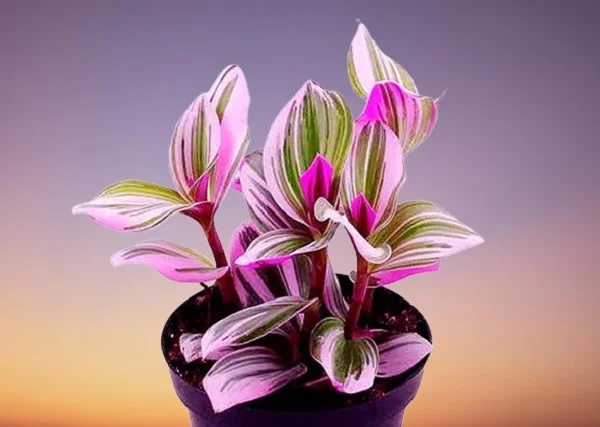
Tradescantia Nanouk Problems & Remedies
Tradescantia Nanouk problems are brown leaves, plant dying, brown spots, leggy growth, yellow leaves, brown shrivelled leaf tips, loss of leaf color, pests and diseases among others. Keep reading for more on these problems, their remedies and solutions.
Brown leaves
Why are the leaves on my Tradescantia Nanouk turning brown?
The leaves on your Tradescantia Nanouk are turning brown due to inconsistent watering, soggy soil, drafts, direct sunlight or salts buildup.
How to fix it
Inconsistent watering: Water when the top 1-2 inches of soil dry out but do not allow the soil to dry out completely. Do not water on a schedule.
Soggy soil: Use a pot that has a drainage hole and well-draining soil.
Drafts: Keep the plant away from sources of drafts like heat sources, AC units, windy doors, drafty windows among others.
Direct sunlight: Move the plant to a shaded away from direct sunshine.
Salts buildup: Regularly flush out accumualted salts by running a stream of water through the soil until it comes out through the drainage hole. Let it run for about 5-10 minutes.
Plant dying
Why is my Tradescantia Nanouk dying?
Your Tradescantia Nanouk is dying due to root-rot disease which is promoted by soggy soil. It is characterized by wilting, yellowing, browning and discolored leaves and corky swellings under the leaves.
How to save a dying Tradescantia Nanouk
- Gently, slip the plant out of its pot and inspect the roots; brown-black mushy roots indicate root-rot.
- Cut away the rotten roots and treat the healthy roots with a copper-based fungicidal solution as recommended by the manufacturer.
- Repot the plant in fresh soil in a a pot with a drainage hole prevent sogginess.
- Stop watering for a few days to give the plant enough time to loss the excess water. After the dry period, resume routine care.
Brown spots
Why is my Tradescantia Nanouk getting brown spots?
Brown spots on your Tradescantia Nanouk are acused by direct sunshine, inconsistent watering, soggy soil, temperature stress, pests infestations or leaf spot disease.
How to fix it
Direct sunlight: Move the plant to a shaded spot or instal a light curtain to filter the sun rays.
Inconsistent watering: Water when the top 1-2 inches of soil dry out but do not allow the soil to dry out completely.
Soggy soil: Use a pot that has a drainage hole and a well-draining soil.
Temperature stress: Keep the plant away from sources of drafts like heat sources, AC units, windy doors, drafty windows among others.
Pests infestations: Regularly inspect the plant for these pests and carry out timely control measures.
Leaf spot disease: Avoid wetting the foliage during watering or water from the bottom. Take timely control measures, see below, under the heading, 'diseases'.
Leggy growth
Leggy growth on Tradescantia Nanouk is due to too little light, underwatering or nutrients deficiency.
How to fix it
Too little light: Move the plant to a brighter spot where it will receive bright indirect light or instal grow lights if the natural lighting is not sufficient.
Underwatering: Water when the top 1-2 inches of soil dy out but do not allow the soilball to dry out completely.
Nutrients deficiency: Feed the plant once a month in spring and summer with a balanced, liquid fertilizer.
Yellow leaves
Yellow leaves on Tradescantia Nanouk are due to inconsistent watering, soggy soil, too little light, temperature stress or nutrients deficiency.
How to fix it
Inconsistent watering: Do not water on a schedule; water when the top 1-2 inches of soil feel dry but do not allow the soil to dry out completely.
Soggy soil: Use a pot with a drainage hole and loose, free-draining soil.
Too little light: Position the plant infront a well-lit window where it will receive bright indirect light.
Temperature stress: Keep the fern away from drafts coming from AC units, windy doors and windows, stoves, hot air vents and others.
Nutrients deficiency: Fertilize the fern with a balanced, water-soluble fertilizer every 4 weeks in spring and summer.
Brown shrivelled leaf tips
Brown, shrivelled leaf tips on Tradescantia Nanouk are caused by dry air, underwatering, use of hard water or fertilizer burn.
How to fix it
Dry air: Set the pot on a wet pebble tray, use a humidifier or group the plants together to raise humidity.
Underwatering: Water when the top 1-2 inches of soil dry out but do not allow the soil to dry out completely.
Use of hard water: Use water that is chlorine-free like rain water or filtered water.
Fertilizer burn: Do not feed in fall and winter as growth is minimal. Every 1-2 months, leach out accumulated salts from the soil.
Loss of leaf color
Loss of leaf color on Tradescantia Nanouk is caused by too little light. Place the plant in a brighter spot under bright indirect light or instal a grow light if you do not have adequate light in your home.
Pests
Common pests on Tradescantia Nanouk are aphids, mealybugs and scale insects.
How to fix it
- Isolate the affected plant to prevent spread to other plants.
- Treat the infested plant with insecticidal soap as per the manufacturer's recommendations.
- Regularly, check between and underneath the leaves for these pests and carry out timely control measures.
- Maintain the plant well pruned to reduce the pest infestations.
Diseases
Tradescantia Nanouk is prone to leaf spot disease which is enhanced by overwet conditions. It presents as brown, soft leaf spots.
How to fix it
- Isolate the affected plant and treat it with horticultural oil as per the manufacturer's instructions.
- Avoid wetting the leaves during watering to minimize the disease infestation; water from the bottom instead.
- Improve the air flow for the plant to discourage the disease.
You liked it? Share on social media.
Related Content
Amazon Associates Disclosure
Homeplantsguide.com is a participant in the Amazon Services LLC Associates Program, an affiliate advertising program designed to provide a means for sites to earn advertising fees by advertising and linking to amazon.com.



